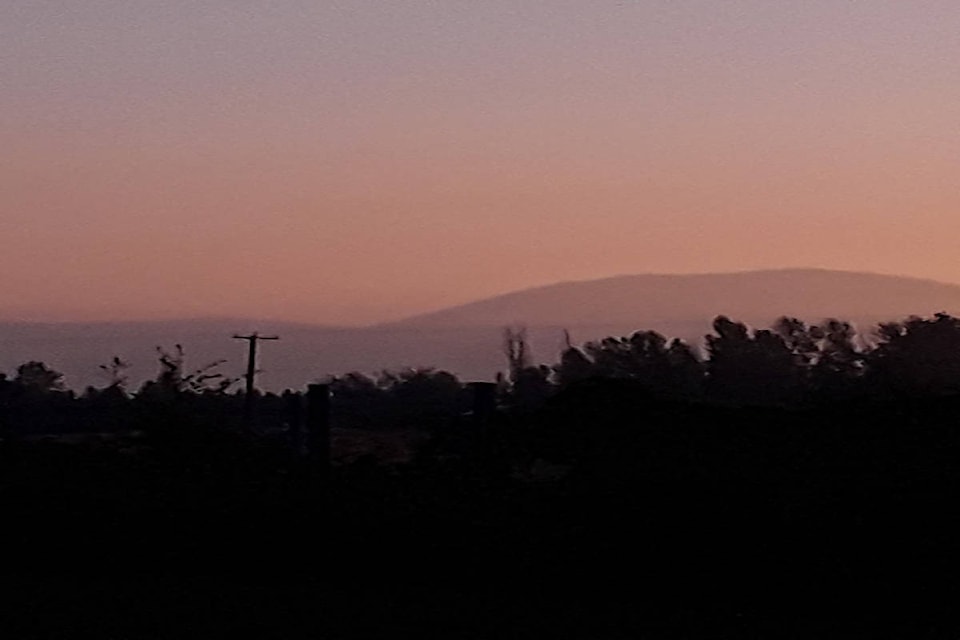Metro Vancouver renewed its air quality (AQ) advisory for a second day for Metro Vancouver and the Fraser Valley Regional District due to high levels of fine particulate matter across the Lower Mainland.
It also issued an additional AQ advisory for ground level ozone on Sept. 9.
Smoke concentrations drifting across the border from Washington and Oregon wildfires could vary widely in the skies over the region today but the AQ conditions will persist until Thursday, said Metro Vancouver officials in a news release.
“Persons with chronic underlying medical conditions or acute infections such as COVID-19 should postpone or reduce outdoor physical activity until the advisory is lifted, especially if breathing feels uncomfortable,” officials said.
“Exposure is particularly a concern for people with underlying conditions such as lung disease, heart disease, chronic obstructive pulmonary disease (COPD) including bronchitis and emphysema, as well as asthma, and/or diabetes, individuals with respiratory infections such as COVID-19, pregnant women and infants, children, outdoor workers (e.g. construction and agricultural workers), and older adults. Individuals who are socially marginalized may also be at elevated risk.”
Ground-level ozone is formed when nitrogen oxides from combustion and volatile organic compounds from solvents react in the air in the presence of sunlight. The highest levels are usually between mid-afternoon and early evening on summer days, and the hot temperatures combined with drifting smoke on Wednesday will cause the ozone levels to increase.
Fine particulate matter, also known as PM2.5, refers to airborne solid or liquid droplets with a diameter of 2.5 micrometres (µm) or less. PM2.5 can easily penetrate indoors because of its small size, and the drifting wildfire smoke impacts those levels.
Smoky skies also continued for a second day across the Lower Mainland due to wildfire smoke drifting into the region.
A public advisory known as a “smoky skies” bulletin was issued Sept. 8 across parts of southern B.C. including Vancouver Island, the Coastal Mainland, Okanagan, Kootenays, and the Boundary region where the smoke was expected to impact those areas within 24 to 48 hours.
The advisory from Environment Canada was based on the fire smoke forecast detailed in the Blue Sky Canada Smoke Forecasting System which tracks the current path of any significant smoke in real time.
“Wildfire smoke is a natural part of our environment but it is important to be mindful that exposure to smoke may affect your health,” according to the bulletin.
Smoke and air quality issues affect those with pre-existing health conditions the most, like lung conditions, as well as older adults, pregnant women and infants, children, and sensitive individuals are more likely to experience health effects from exposure.
READ MORE: Smoky Skies bulletin went out on Tuesday
READ MORE: Heat warnings for parts of B.C.
Do you have something to add to this story, or something else we should report on? Email:
jfeinberg@theprogress.com
@CHWKjourno
Like us on Facebook and follow us on Twitter.
Want to support local journalism during the pandemic? Make a donation here.
